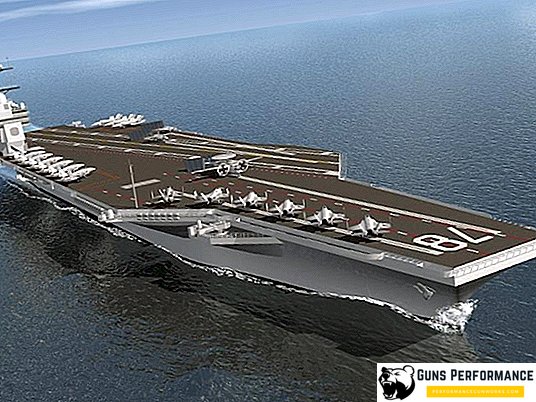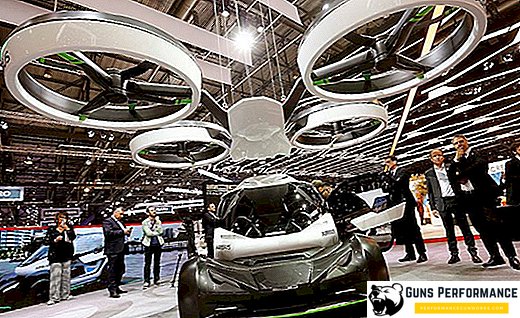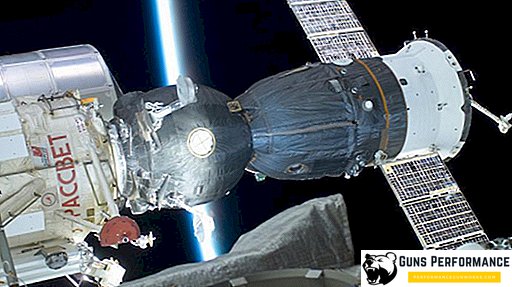During World War II, enemy artillery or armored vehicles was the main enemy of tanks on the battlefield. But soon after the war, this situation changed, and gradually an enemy aircraft became an increasingly dangerous enemy of the tank. Especially increased airborne danger with the appearance of combat helicopters over the battlefield. These cars became real "tank hunters". In October 1973, eighteen Egyptian tanks were destroyed by the Israeli Air Force Cobra during one sortie, without losing a single rotary-wing machine.

It became clear that, from now on, the air defense units should not only cover settlements and fixed objects, but also protect their troops on the march. The Soviet military very quickly made practical conclusions from this fact. Projects of domestic MANPADS were activated, and at the end of the 1950s, the development of the Kub self-propelled anti-aircraft missile system began in the USSR. Its main task was to protect ground forces, including tank formations, from enemy aircraft and helicopters operating at medium and low altitudes. "Cube" was adopted in 1967. But in early 1972, a decision was made to begin the development of a new self-propelled air defense system, which was to replace the “Cuba”. Thus began the history of "Buka" - one of the most effective air defense systems in the world.
The history of the "Buk"
The head enterprise of the development of the new air defense system was the Tikhomirov Scientific Research Institute of Instrument Engineering (it was this organization that was involved in the creation of Cuba). At the same time, work began on the development of the Hurricane anti-aircraft complex for the Navy using a single anti-aircraft missile with the Buk.

The developers had to meet in a very short time, so the adoption of the complex into operation was divided into two stages. Initially, all forces were sent to create a new 9M38 anti-aircraft missile and a self-propelled firing system. They became part of the batteries of the old "Cube" complex and significantly increased its combat power. It was in this form in 1978 that the Kub-M4 ZRK 2K12M4 was put into service with the USSR Army.
The upgraded "Cube" had much better technical characteristics: the number of target channels increased from 5 to 10, the range and height of the defeat increased, now the complex could destroy more high-speed air targets.
The second stage of the creation of the new air defense system assumed the creation of a complete complex consisting of a self-propelled 9A310 launcher armed with new M938 anti-aircraft missiles, a 9S18 target detection station, a 9C470 command post and a 9A39 charging installation. In 1977, began testing the new air defense system, which lasted until 1979. The tests were successful, and the complex was adopted under the designation "Buk-1".
The new anti-aircraft missile system was designed to combat airborne targets at low and medium altitudes (25-18000 meters) and at a distance of 3 to 25 kilometers. The probability of hitting the target was 0.6. All elements of the complex are placed on unified tracked vehicles, all-terrain.

Almost immediately after the adoption of the ZRK 9K37 complex, in 1979, work began on its modernization. They were completed in 1982, at the same time they were successfully tested, and the upgraded Buk-M1 air defense system was put into service. The new anti-aircraft missile system has been significantly improved a number of basic characteristics. The affected area was significantly increased, the probability of hitting cruise missiles and helicopters increased, and the opportunity to recognize targets appeared. In addition, the Buk-M1 has become much less vulnerable to anti-radar missiles.
The next stage of the modernization of the air defense system "Buk" experienced in the early 90s of the last century. A new 9M317 anti-aircraft missile was installed on the anti-aircraft complex, which has much more “advanced” characteristics than its predecessor (although the complex can be armed with the standard 9M38M1 missile for Buk). The new rocket hit targets at an altitude of up to 25 kilometers and at a range of up to 50. The new anti-aircraft missile system was given the designation 9K37M1-2 Buk-M1-2. Work on the air defense system took place from 1993 to 1996. In 1998, "Buk-M1-2" adopted by the Russian army. The structure of the Buk-M1-2 complex also provides for the optional inclusion of a new component - a special machine with a radar that serves to highlight targets and missile guidance. In this case, the radar antenna is on a telescopic lift, raising it to a height of 22 meters. This additional element significantly increases the effectiveness of the air defense system, especially against low-flying, high-speed targets (cruise missiles).
Since the mid-80s, work was underway on another modification of the Buk complex, which has the ability to fire at 24 air targets and has a much larger radius of destruction (up to 50 kilometers). This modification was called 9K317 Buk-M2, it was also planned to equip it with a 9M317 rocket. In the 90s, tests of the new complex were carried out, however, due to the difficult economic situation in the country, it never went into series. Only fifteen years later, the Buk-M2 was finalized and began to be delivered to the troops in 2008.

Currently, work is underway on the next modification of the legendary Buk-M3 9K317M air defense missile system. He will be able to accompany and hit up to 36 goals simultaneously. The complex is planned to be equipped with a new missile with a radar guidance system. The complex will be able to work successfully in conditions of strong electronic countermeasures. The new anti-aircraft missile system is planned to be put into service in 2019.
The device Buk
The “Buk-M1” air defense missile system is intended for the destruction of military, tactical and strategic aircraft, helicopter gunships, cruise missiles and unmanned aerial vehicles. This complex is able to effectively resist the massed air raids of enemy aircraft and reliably cover troops or military industrial facilities. The air defense missile system can work qualitatively in an environment of electronic suppression and in all weather conditions. SAM "Buk-M1" provides a circular radius of target destruction.

One battery of "Bukov" consists of six self-propelled fire installations, three charging machines, a target detection station and a command post. As a base for all machines of the complex, the tracked chassis of the GM-569 is used. It provides "Bukam" high maneuverability, maneuverability and speed of deployment of the complex. All systems of the complex have autonomous power supply.
The command post complex "Buk" can work in conditions of active use of electronic interference by the enemy. KP is able to process information on 46 air targets, provides reception and processing of data from six SDA and target detection station, as well as from other air defense units. KP identifies air targets, identifies the most dangerous of them and distributes the task to each SDA.
The target detection station (SOC) is a Kupol radar, operating in the centimeter range, capable of detecting airborne targets at altitudes up to 20 and distances up to 120 kilometers. The station has a high level of noise immunity.

The Buk-M1 self-propelled firing system (SOU) is equipped with four missiles and a 9C35 centimeter radar. SOU is designed to search, escort and defeat air targets. The installation has a digital computing complex, communications and navigation equipment, a television and optical viewfinder, and an autonomous life support system. The LDS can operate autonomously, without reference to a command post and a target detection station. However, in this case, the affected area is reduced to 6-7 degrees in angle and 120 degrees in azimuth. The LDS can perform its functions in the conditions of radio electronic jamming.
The charging system of the Buk complex can store, transport and load eight missiles.
The complex is armed with a 9M38 anti-aircraft solid-fuel single-stage missile. It has a radar guidance system with a semi-active principle of operation and a high-explosive fragmentation warhead. At the initial stage of the flight correction is carried out by radio signals, and at the final - due to homing.
To defeat air targets, a warhead weighing 70 kilograms is used, which is undermined with a contactless fuse 17 meters from the target. The striking elements of the rocket is the shock wave and fragments. The length of the rocket is 5.5 meters, its largest diameter is 860 mm, the total mass is 685 kilograms. The rocket is equipped with a solid-fuel engine operating in two modes, with a total operating time of 15 seconds.

Technical characteristics of the Buk-M1 air defense system
| The affected area, km: - range - height - parameter | 3,32… 35 0,015… 20-22 up to 22 |
| Probability of hitting the target - type fighter - type helicopter - type cruise missile | 0,8… 0,95 0,3… 0,6 0,4… 0,6 |
| Maximum target speed m / s | 800 |
| Reaction time, with: | 22 |
| Flight speed Zour, m / s | 850 |
| Rocket weight, kg | 685 |
| Warhead weight, kg | 70 |
| Conduit on purpose | 2 |
| Zanalny according to Zur | 3 |
| Deployment time (coagulation), min | 5 |
| The number of missiles on a combat vehicle | 4 |
Today, the Buk air defense missile system of various modifications is in service with more than ten countries. A few more countries are currently negotiating the sale of the Russian complex. Several export versions of “Buka” have been developed, and work continues on its further modernization.












